China promised climate action. Its emissions topped US, EU, India combined
Beijing’s heavy reliance on coal plants has cast a shadow over the global efforts to tackle climate change.
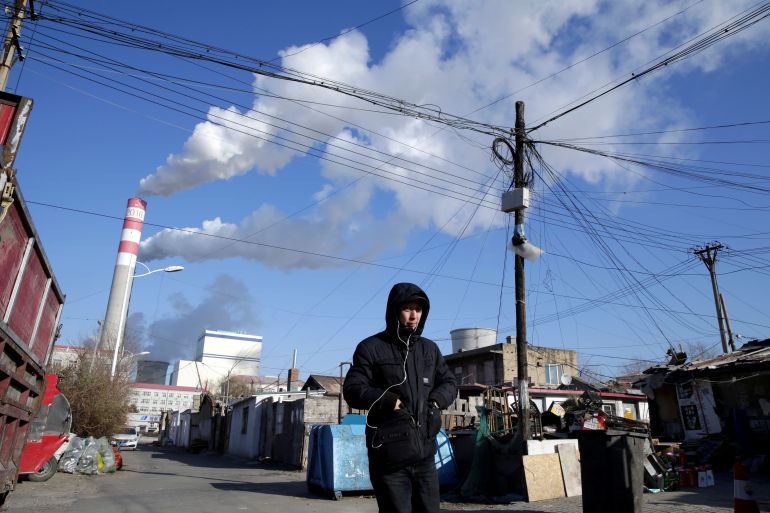
Taipei, Taiwan – More than any other country, China holds the power to make or break global efforts to prevent a climate catastrophe.
The world’s second-largest economy is the largest polluter globally, although its emissions are comparable to many countries on a per capita basis.
Keep reading
list of 4 itemsJudge sides with youth activists in historic US climate crisis case
Germany’s climate effort to lag below 2030 targets, say experts
Are climate reparations finally on the way for vulnerable countries?
China produces about 30 percent of total emissions – more than the United States, the European Union and India combined, according to Global Carbon Budget 2022.
At the same time, Beijing is eking out a place as a leader in renewable energy, building up more solar power capacity than the entire rest of the world.
But while developed economies are reducing their emissions – albeit too slowly to meet their Paris Agreement pledges – China’s emissions are rising fast due to a furious appetite for coal used to power its cities and energy-intensive industries like steel.
China’s emissions grew by 10 percent year-on-year during the second quarter of this year – putting it on course to beat its previous record of 11.47 billion metric tonnes in 2021, according to data compiled by Carbon Brief, a United Kingdom-based website focused on climate policy.
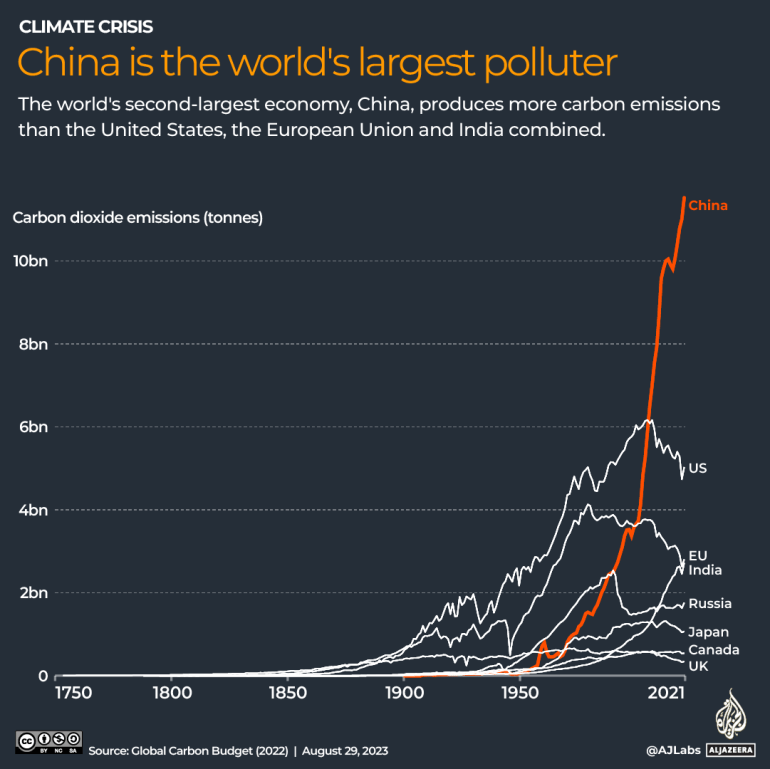
Left unchecked, the growing carbon footprint threatens to derail international efforts to address the climate crisis, which scientists say already fall far short of what is needed to mitigate the worst outcomes of rising temperatures.
The Chinese economy’s heavy reliance on coal is widely expected to persist for years to come, while climate experts fear that Beijing’s goal of “peak carbon” by 2030, even if achieved, may still be unacceptably high.
Meanwhile, China’s renewable energy targets, though ambitious, face considerable obstacles, including an outdated power grid and the ongoing challenge of storing renewable energy, analysts say.
“No one frankly comes close to China’s leadership in renewables, second place is quite distant,” Cory Combs, associate director of Trivium China, a policy research company, told Al Jazeera.
“On the other hand, China is outpacing the rest of the world on coal as well.”
In 2020, Chinese President Xi Jinping pledged to reduce his country’s emissions by 65 percent from their 2005 level by 2030 and reach carbon neutrality by 2060.
While Xi reiterated those goals in July, the Chinese leader included a caveat: energy policy would be based on the country’s needs and not “swayed by others”.
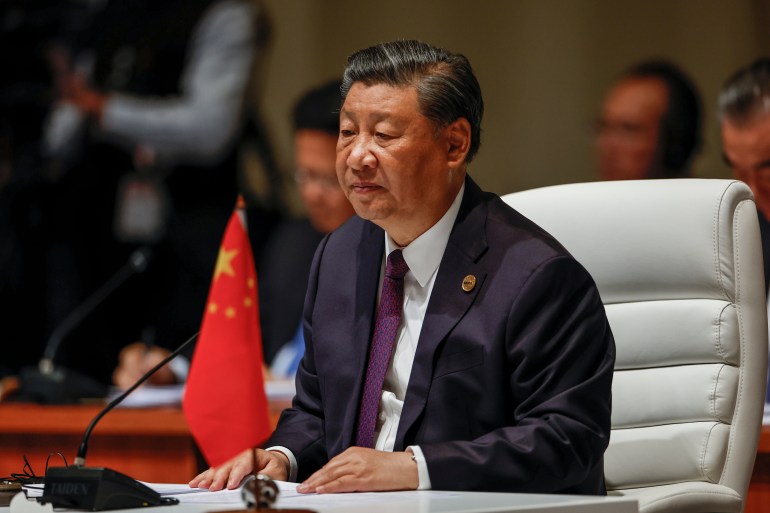
Driven by concerns about its future energy security, Beijing has in recent years embarked on a building spree of coal-fired power plants.
Chinese authorities approved 86 gigawatts (GW) of new coal-fired plants in 2022 alone, and green-lit 50GW more in the first six months of 2023, according to Greenpeace.
In total, China currently has 243 GW of new coal-fired power facilities in the pipeline, enough to power Germany, according to a report by the Centre for Research on Energy and Clean Air (CREA) and Global Energy Monitor.
“The biggest story right now is probably the energy security perspective. China will not give up coal until it has a guarantee of effective energy security,” Combs said.
“Specifically, we are looking at: one, the ability to provide base-load power at any given time; and two, the ability to guarantee that it can meet any particular peak load.”
Beijing’s decision to double down on coal reflects fears of a repeat of energy crunches that have afflicted the industry in recent years.
In 2021, coal shortages and surging demand for goods from factories during the COVID-19 pandemic resulted in blackouts in 20 Chinese cities and provinces. The following summer, a drought sparked by a record-breaking heatwave reduced the capacity of the country’s hydropower dams, which make up 16 percent of China’s power mix.

Faced with back-to-back crises, provinces such as Guangdong began to increase their coal power capacity to ensure they would not face the same issues in the future, said David Fishman, a senior project manager at the Lantau Group, an economic consultancy specialising in Asia-Pacific’s power and gas markets.
“We could draw a pretty clear line there [that] somebody in the economic planning energy office in Guangdong was looking at the same mock-up we did and went, ‘We’re vulnerable to a serious drought in Yunnan, we need to add more backup capacity’,” Fishman told Al Jazeera.
China’s record emissions of recent years may, in fact, underplay the country’s trajectory as carbon-heavy industries like construction and steel experienced serious disruption due to lockdowns in big cities and manufacturing centres.
Nonetheless, some climate experts believe that peak carbon in China is still achievable by 2030 – although the size of the peak could vary considerably depending on political factors.
Boyang Jin, a senior carbon analyst at the UK-based LSEG, said the new coal-fired power plants are meant as a stopgap measure only and provincial governments will still be expected to meet climate targets set by the powerful National Development and Reform Commission.
“With more and more renewable capacity put into operation, coal-fired plants will inevitably decrease their output, or running hours,” Jin told Al Jazeera.
“These plants will be gradually transformed from base load to peak load. Therefore, it’s not at odds with carbon neutrality pledges.”
Still, political risks loom.
China’s slowing economy could encourage Beijing to attempt to build its way to economic growth as it has done in the past, while the powerful steel industry may resist efforts to rein in emissions, analysts say.
“The peak is in sight, it’s achievable, the preconditions are there but there’s a risk for these two reasons that the peak gets delayed until very late in the decade and that could single-handedly derail the global climate effort,” Lauri Myllyvirta, a lead analyst and co-founder of the Centre for Research on Energy and Clean Air, told Al Jazeera.
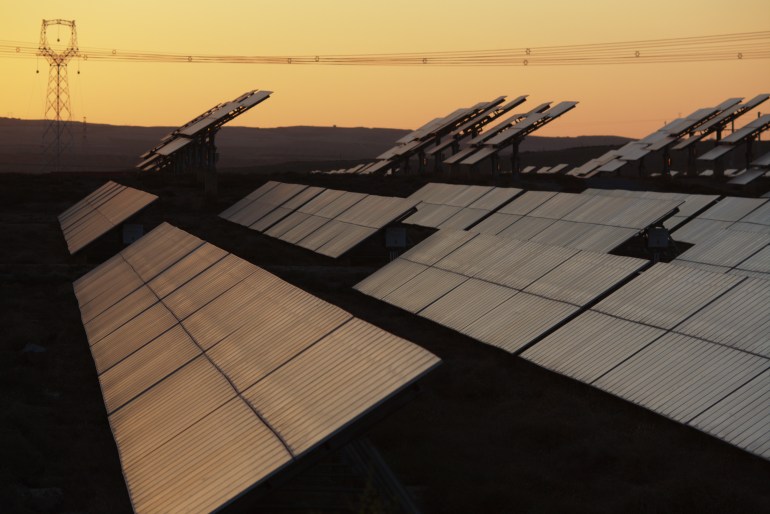
China’s investments in renewables have proceeded at an unprecedented pace.
Beijing topped the list of investors in clean energy in 2022 with $546bn – half of the global total that year, according to BloombergNEF data.
China’s current wind and solar capacity is enough to meet about 30 percent of the country’s energy needs, according to government data.
Translating that investment into reliable energy, however, is not a simple task in practice.
In the case of many wind and solar farms, there is a significant gap between how much power can be generated on paper and how much can be actually used.
China’s National Energy Administration has projected that China’s actual energy generated from renewables will only increase by less than 1 percent per year into 2030.
Much of the gap is due to China’s limited capacity to store and transport power generated from renewable sources to areas of high demand.
While 94 percent of China’s population lives to the east of the “Heihe-Tengchong Line” – an imaginary line dividing the country from northeast to southwest – many hydropower dams and solar power and wind farms are located in sparsely-populated regions in the west.
Other challenges include government intervention in the energy market to keep electricity prices artificially low, encouraging excessive consumption.
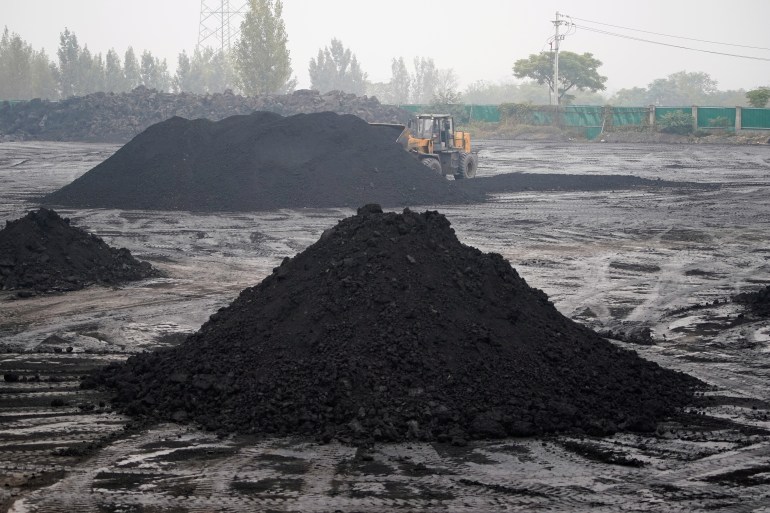
Fishman said China’s bid for carbon neutrality will depend on its successful adoption of burgeoning technologies such as carbon capture and green hydrogen over the next few decades.
“The real question is 2060, but obviously it’s far off,” he said. “It relies on a lot of technologies that are far from being mature and scalable and cost-effective.”
Until then, China’s reliance on coal looks set to stay, analysts say.
“Coal is not necessary in principle, but there needs to be a lot more investment and there needs to be a lot of market reform in order to make that practical,” Trivium China’s Combs said.
“And until they’re really in place, it’s coal. And so we get left in the status quo, where you have massive investments in renewables and continued investment in coal.”